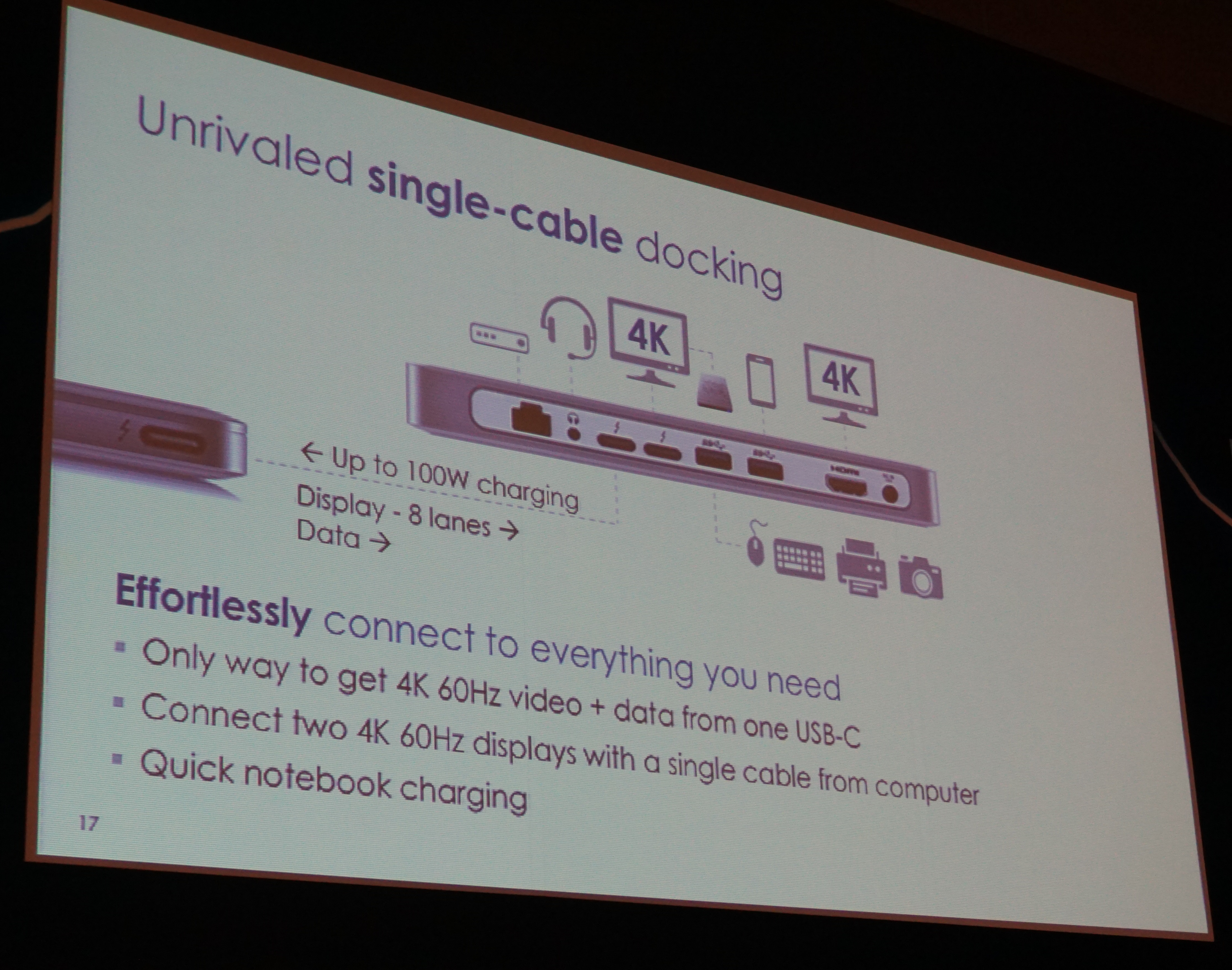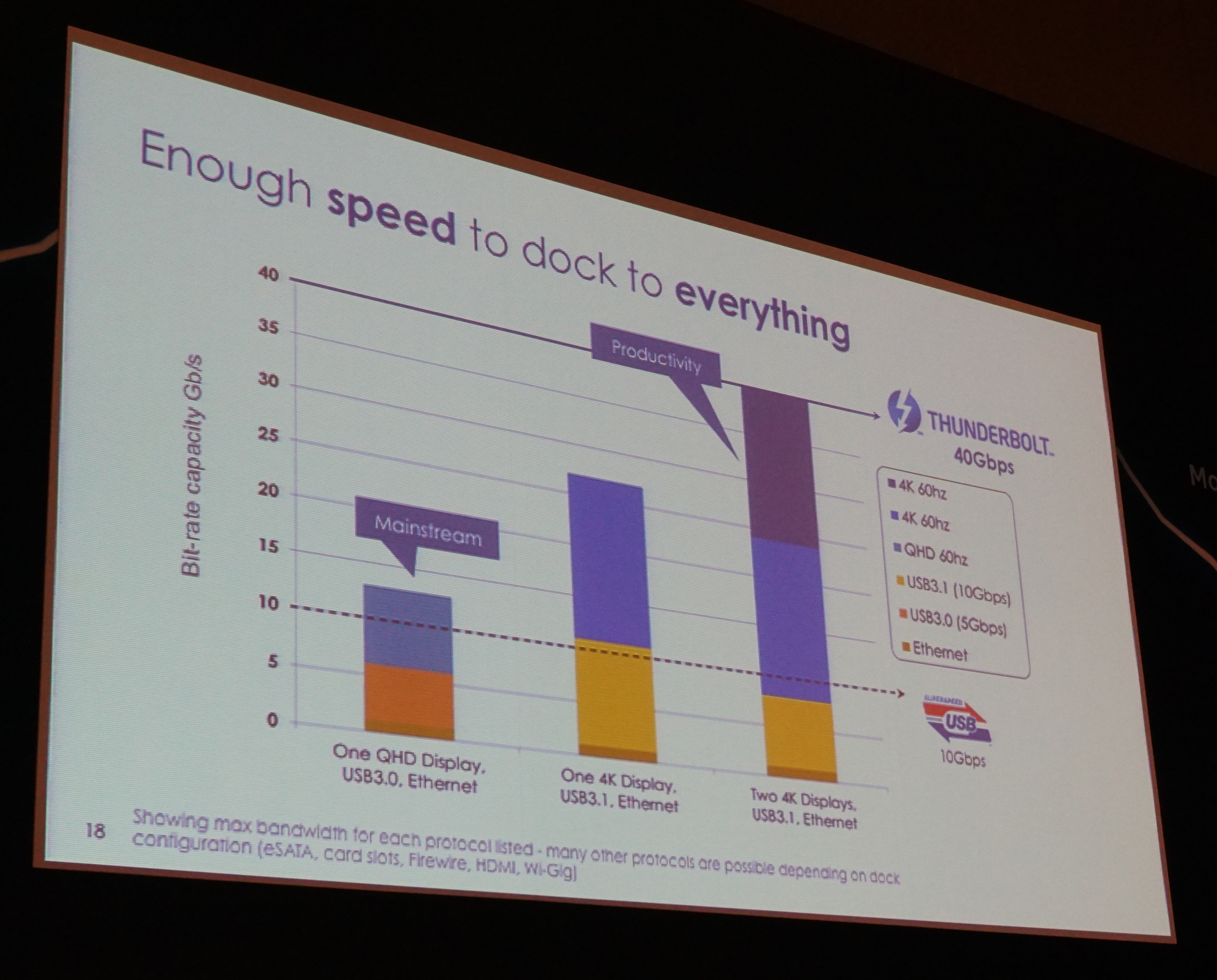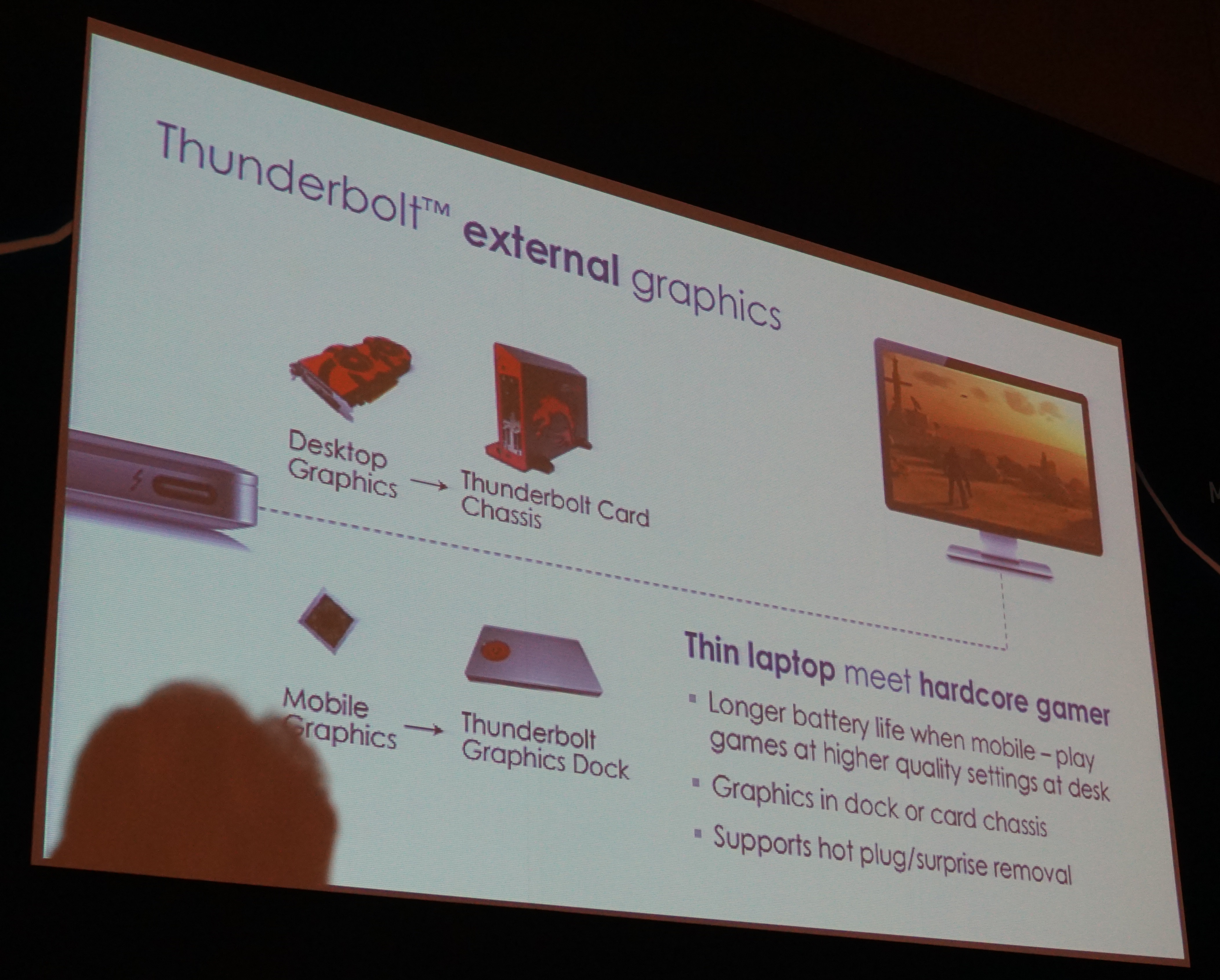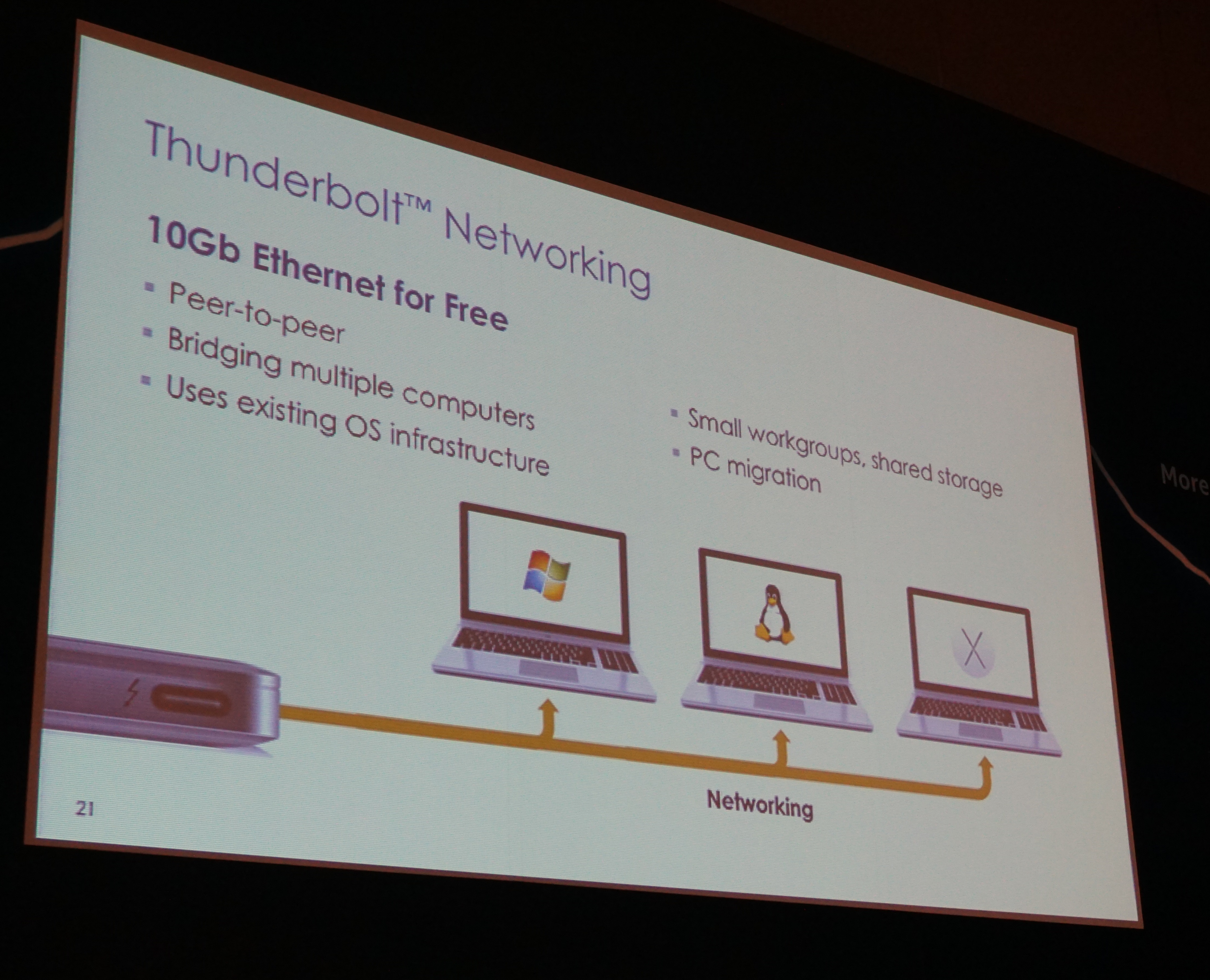Intel Introduces Thunderbolt 3, Offering 40 Gb/s, DisplayPort And USB 3.1 Over USB Type-C
The new Thunderbolt 3 works over a USB Type-C connection, and with 40 Gb/s bandwidth. You'll be able to charge your laptop, drive two 4K displays at 60 Hz, and connect all your peripherals over one cable using a Thunderbolt 3 docking station.
At a press conference in Taiwan at Computex, Intel introduced the next generation of Thunderbolt: Thunderbolt 3. This new revision of Thunderbolt isn't only a protocol update for higher speeds, it also brings with it the USB Type-C connector. The codename for the chip supporting Thunderbolt 3 is Alpine Ridge, and it will be able to push up to 40 Gb/s over a single link -- twice that of the last generation Thunderbolt technology.
The Alpine Ridge chip integrates both Thunderbolt 3 technology and a USB 3.1 controller. With DisplayPort running over the Thunderbolt protocol, you'll be able to power up to two 4K displays, both of which can run at 60 Hz. Alternatively, the new connection will enable a 5K display at 60 Hz over a single cable, which is something that previously required two DisplayPort 1.2 connections.
Naturally, you'll be able to still daisy-chain up to six Thunderbolt devices on a single connection. Within the daisy chaining, as many as two devices will support the same protocols as the host, meaning that the device you plug into the PC will also be able to host USB, PCI-Express and DisplayPort. After the second device, the chaining is limited to Thunderbolt.
The pairing of Thunderbolt to the USB Type-C connector has more implications than we may initially see on the surface. The idea behind the USB Type-C connector is that it is one connector that can be used for all purposes – USB, DisplayPort, PCI-Express, and even 100 W of power. With Thunderbolt added to the mix, it means that USB Type-C will really be one connector to rule them all.
For docking purposes, such a connector is ideal. You'll be able to split the 40 Gb/s of bandwidth across multiple devices, for example handing about 20 Gb/s to a 4K monitor at 60 Hz, 10 Gb/s to a USB 3.1 storage device, and little bits of bandwidth to other peripherals such as a keyboard, mouse and networking devices.
In addition to all of the above, because the USB Type-C connector supports PCI-Express 3.0, external graphics is becoming ever more a reality. As time goes on, we should be seeing various docking stations that integrate a graphics card, such as those we've seen from Alienware and MSI. The bandwidth for external graphics won't be huge, with access to just four PCI-Express 3.0 lanes, but it will offer much better possibilities than built-in graphics in laptops due to their thermal restrictions.
Additionally, external graphics over Thunderbolt 3 will support hot-plugging, meaning you don't need to restart your laptop to make or break the connection – something that is a requirement with the Alienware and MSI devices.
Get Tom's Hardware's best news and in-depth reviews, straight to your inbox.
Things don't end there though; Intel also introduced Thunderbolt Networking, which essentially allows you to link multiple devices together in a peer-to-peer connection. Remember how you've always wanted to connect two laptops with a USB cable? Well, soon you'll be able to!
As far as cable options go, Intel revealed three standards: A passive copper cable that will be limited to 20 Gb/s bandwidth and can be up to 2 m long; an active 40 Gb/s copper cable up to 2 m long; and an active 40 Gb/s optical cable up to 60 m long. Native DisplayPort 1.2 is only supported on the passive 20 Gb/s cable, but that only matters for direct host-to-display connections. With a docking station in between, and when using an active 40 Gb/s cable, you'll be able to drive two 4K displays at 60 Hz without an issue.
The Alpine Ridge chip is still in development, but it should be rolling out to devices before the end of this year.
Follow Niels Broekhuijsen @NBroekhuijsen. Follow us @tomshardware, on Facebook and on Google+.
Niels Broekhuijsen is a Contributing Writer for Tom's Hardware US. He reviews cases, water cooling and pc builds.
-
SteelCity1981 so does this mean intel is going to support usb 3.1 natively then with skylake...Reply -
ammaross Replyso does this mean intel is going to support usb 3.1 natively then with skylake...
That's my guess, but Intel doesn't have a good track record for it... :( -
avc23 "The bandwidth for external graphics won't be huge, with access to just four PCI-Express 3.0 lanes" what current gen gfx card would max out the bandwidth??Reply -
SirKnobsworth Replyso does this mean intel is going to support usb 3.1 natively then with skylake...
Possible, but not likely I think. A USB 3.1 controller is built into the Alpine Ridge TB3 controller, which is only connected via PCIe and DisplayPort.





